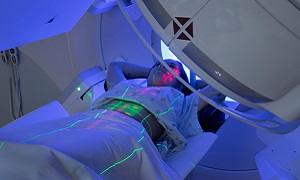Squamous Cell Carcinoma
Squamous Cell Carcinoma is a common form of skin cancer, which is found in areas of the body that have been damaged by the sun’s UV rays or tanning beds. The exposed skin can include skin in the head, neck, chest, upper back, lips, ears, legs and hands.
Unlike other types of skin cancer, Squamous Cell Carcinoma (SCC) is a slow-growing skin cancer. It can however spread to tissues, bones as well as the lymph node, where it can become quite difficult to treat. Although usually not life-threatening, it can be quite aggressive. It can however be easy to treat if it is caught early. If it is left untreated, Squamous Cell Carcinoma of the skin might grow large and spread to various parts of the body, which can lead to various complications.
Symptoms
Squamous cell carcinoma of the skin usually occurs on sun-exposed skin, such as the scalp, the backs of your hands, your lips or your ears. However, it might also occur anywhere on the body, including inside your mouth or the bottoms of your feet. It may even occur in your genitals.
It can have several signs and symptoms which include:
- A firm and red nodule
- A new sore or raised area on an old scar or an ulcer
- A flat sore with a scaly crust
- A red and raised patch or wart-like sort on or in the anus located on your genitals.
Causes and risk factors
Mutations that occur in skin cell DNA leads to skin cancer. These changes can cause abnormal cells to multiply out of control. When this occurs in the squamous cells, the condition is termed as SCC.
UV radiation is the most common known cause of DNA mutations, leading to skin cancer. UV radiation can come from sunlight or tanning lamps and beds.
Though frequent expose to UV radiation increases the risk of skin cancer, the condition can also develop in people who are not spending much time in the sun or tanning beds. Such people might be inherently predisposed to skin cancer or they might be having a weaker immunity, which increases their likelihood of getting skin cancer. Patients who are receiving radiation treatments for other skin conditions can also be at risk of skin cancer.
Having fair skin, light-colored hair and blue, green or gray eyes is a risk factor for SCC. Having long-term exposure to UV rays is the most common risk factor. Few other risk factors include living in sunny regions or at a high altitude, having a history of being exposed to chemicals, having a history of multiple severe sunburns.
Diagnosis
Tests and procedures which are used for diagnosis of squamous cell carcinoma of the skin can include:
Physical exam
Removing a sample of tissue for testing
For confirming squamous cell carcinoma of the skin diagnosis, your doctor will be using a tool to cut away some or the entire suspicious skin lesion also called a biopsy. The type of skin biopsy which you undergo depends on your particular situation. The tissue is sent to a laboratory for examination.
Treatment
Treatment is based on multiple factors, such as the extent as well as the severity of your cancer, your age, your overall health, the location of cancer.
There are many treatments that can be performed as in-office procedures. These include:
Mohs’ micrographic surgery
In Mohs’ micrographic surgery, your doctor removes the abnormal skin using a scalpel, along with some of the surrounding tissue. This sample is then immediately examined using a microscope. If cancer cells are found in the sample, this process is repeated until no cancer cells are found.
Electrosurgery
Electrosurgery, which is also known as curettage and electrodesiccation, involves scraping off cancer as well as burning the skin for killing cancer cells. Typically this process is done more than once for ensuring thorough treatment as well as complete removal of cancer.
Excisional surgery
Excisional surgery, during which your doctor removes your cancer cells as well as a thin layer of healthy skin, in the surrounding area. Stitches are used for closing the wound. After this, the sample is sent to a laboratory to ensure the entire cancerous area has been removed.
Radiation
Some doctors might also use photodynamic treatment, or laser surgery and topical medications for treating SCC. However, the US Food and Drug Administration have not approved such methods for treating it.
Once SCC has been treated, it is important that you attend the follow-up visits with your doctor. SCC can return and therefore, it is important that you monitor your skin for any precancerous or cancerous areas at least once a month.
Prevention
To reduce the risk for SCC, one can follow these tips:
- Limiting exposure to the sun, especially during 10 am and 4 pm
- Wear sunscreen while going out in the sun
- Wear sunglasses that provide UV ray protection
- Wearing a hat and covering the skin while working outside
- Check the skin every month for any abnormal growths
- Protecting the skin during winter as winter rays can be especially dangerous
- Avoid tanning beds and lamps
- Consult a dermatologist once a year, for a full-body skin check



